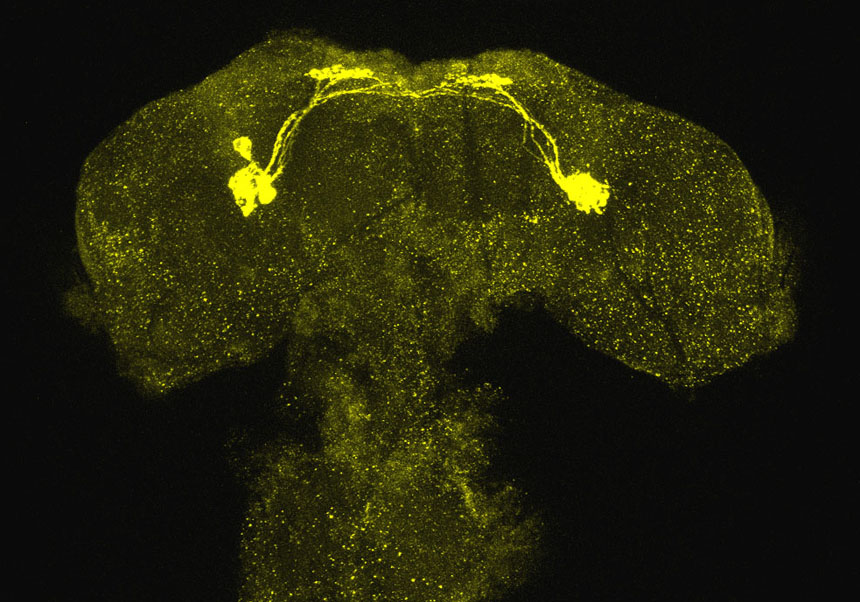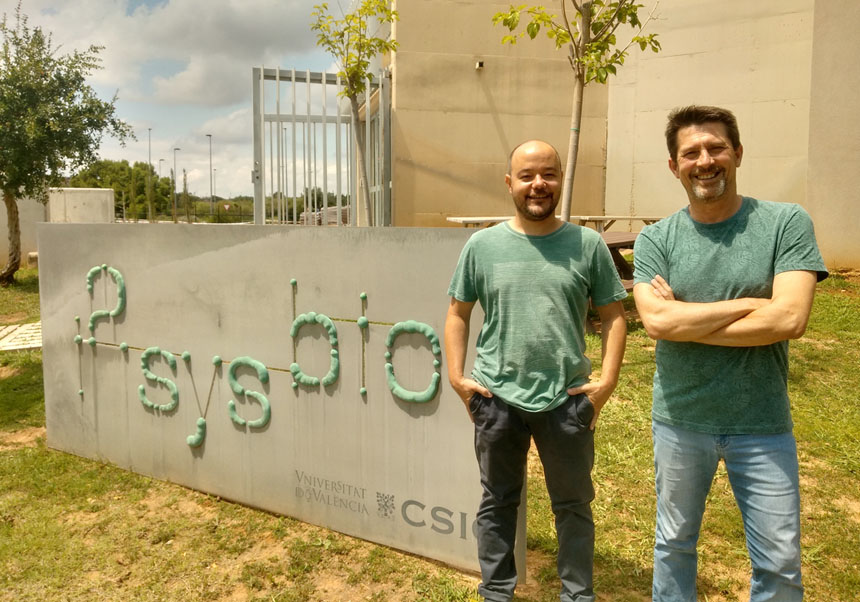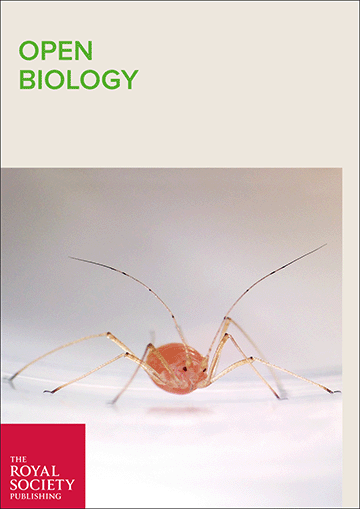Key gene discovered in the daily and annual cycles of the pea aphid, applicable to pest control
- Scientific Culture and Innovation Unit
- July 10th, 2023
Researchers from the Institute for Integrative Systems Biology (I2SysBio), a joint centre of the University of Valencia (UV) and the Higher Council for Scientific Research (CSIC), among other centres, have discovered that the Pigment-Dispersing Factor protein gene (PDF), which is part of the insect circadian clock (responsible for daily rhythms), is also found in the pea aphid. The research has been published in the prestigious journal Open Biology, in which, in addition, an image of this work is on the cover of the month of July.

“This research is important to understand how the biological cycles are regulated, not only of aphids, but of numerous insects, and to outline the design of strategies or tools for their control. Ideally, if we could avoid the annual entry into diapause (physiological state of inactivity) of an insect vector or pest, it would be unable to withstand harsh winter conditions. And vice versa, if we induce diapause in a benign period, the insect will be absent, which will prevent its potential damage”, affirm David Martínez Torres, professor of Genetics (UV) and researcher at I2SysBio and Gustavo L. Rezende, distinguished researcher at the mixed centre.
The research has discovered that the PDF gene is present in all species of aphids, when, 10 years after the publication of the first pea aphid genome, it was already assumed that these insects lacked this gene. In addition, “we have also located the neurons that produce this neuropeptide (small proteins that act as chemical messengers) and their connections, on the one hand, with photoreceptors and, on the other, with cells involved in the response via the insulin pathway”, according to the two researchers from the I2SysBio “Biological Cycles of Aphids” Research Group.
The work also confirms that more neuropeptide is produced on short days than on long days, which could be a signal (or part of it) that informs about the photoperiod (or day length), according to the researchers.
Animals have adaptations known as biological rhythms in front of the rhythms of the Earth. Circadian rhythms are adaptations to daily changes, while seasonal ones are important in front of the changes throughout the year. Among the latter we can highlight the migrations of birds or the hibernation of bears and the diapause in insects. But you have to anticipate the arrival of bad weather, and it is not possible to make a mistake and migrate too early or do it too late, and for this the most reliable clue is the length of the day.
Photoperiodism is the ability of many species to detect changes in day length (photoperiod) and respond with changes in their physiology or behaviour. In insects it is known, only in a very partial way, how the photoperiodic system works and in some species the involvement of PDF (which is part of the circadian clock of all insects) has been demonstrated. Aphids are photoperiod insects par excellence, with a life cycle absolutely determined by the photoperiod.
In this sense, according to Martínez Torres and Gustavo L. Rezende, “in aphids, PDF seemed to be absent. Our work shows the presence of a very different form of PDF in aphids and locates the cells in which it is produced, as well as its connections and number, which vary with photoperiod. This leads us to propose that PDF would be involved in the transmission of the photoperiodic message that modulates the seasonal response in these insects”. After the description of photoperiodism for the first time in plants in 1920, the year 2023 marks the centenary of the description of aphids as the first photoperiod animals.
This research, in which Francesca Sara Colizzi and Charlotte Helfrich-Förster from the Universität Würzburg in Germany and Jan A. Veenstra from the Université de Bordeaux in France are also participating, has been supported by the Ministry of Science and Innovation, the Ministry of Universities (María Zambrano Aid) and by funds from the European Union (Horizon 2020 Program).
Article:
Colizzi FS, Veenstra JA, Rezende GL, Helfrich-Förster C and Martínez-Torres D. 2023 Pigment-dispersing factor is present in circadian clock neurons of pea aphids and may mediate photoperiodic signalling to insulin-producing cells. Open Biol. 13: 230090. https://doi.org/10.1098/rsob.230090
Annex photo captions:
1. I2SysBio researchers participating in the study. Gustavo Lazzaro Rezende (left) and David Martínez Torres (right).
2. Cover of the journal Open Biology for July, with an image of the pea aphid Acyrthosiphon pisum. Author: Gustavo Lazzaro Rezende.




















